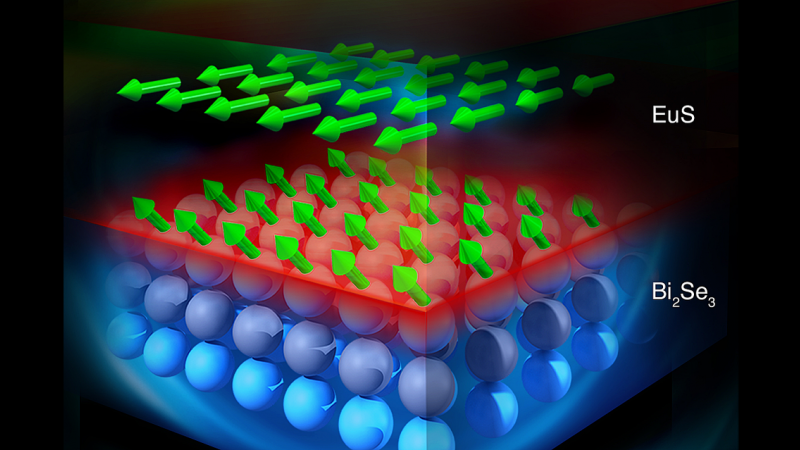OAK RIDGE, Tenn., May 9, 2016 – A multi-institutional team of researchers has discovered novel magnetic behavior on the surface of a specialized material that holds promise for smaller, more efficient devices and other advanced technology.
Researchers at the Department of Energy’s Oak Ridge National Laboratory, Massachusetts Institute of Technology and their collaborators used neutron scattering to reveal magnetic moments in hybrid topological insulator (TI) materials at room temperature, hundreds of degrees Fahrenheit warmer than the extreme sub-zero cold where the properties are expected to occur.
The discovery promises new opportunities for next-generation electronic and spintronic devices such as improved transistors and quantum computing technologies. Their research is discussed in a paper published in the journal Nature.
TIs are relatively new materials, said Valeria Lauter, coauthor and instrument scientist at the Spallation Neutron Source, a DOE Office of Science User Facility at ORNL. A unique property of TIs is that electrons can flow on the surface without dissipation, while the bulk of the material serves as an electrical insulator—ideal for semiconducting materials.
“The properties of TIs are fantastic,” Lauter said, “but in order to use them in devices we need to be able to introduce magnetism on the surface without disturbing the bulk insulating properties of the material.”
This can be achieved in two ways: by impurity doping, where magnetic atoms are incorporated onto the TI surface, or by proximity coupling, where magnetism is induced by interfacing the TI with a layer of ferromagnetic insulating film.
The first method presents a problem, however. Doping can cause magnetic clusters if the atoms are not uniformly distributed, resulting in decreased electron transport controllability. Proximity coupling, on the other hand, can be obtained on clean, atomically sharp interfaces with crystalline orientations between two materials.
Using the proximity coupling method, Lauter’s collaborators at the Massachusetts Institute of Technology engineered hybrid bilayer heterostructures of bismuth selenide (Bi2Se3) TIs combined with a europium sulfide (EuS) ferromagnetic insulator (FMI). The definite spin directions of the FMI in proximity to the TI enable dissipation-free, spin-polarized (i.e. magnetic) electron flow in a thin layer close to the interface. That marriage forms a mutually magnetic relationship, Lauter said, though it’s difficult to establish.





